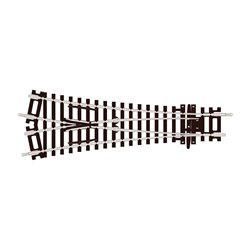Static grass puffer bottles work by manually charging model grass fibres with static electricity. When the charged...
No products
Product successfully added to your shopping cart
There are 0 items in your cart. There is 1 item in your cart.
Search Tips
What is a wye junction in railways?
A wye junction (sometimes called a wye or Y-track) on a model railway refers to a triangular junction where two diverging tracks come together again into one track. It allows a train or locomotive to reverse direction without the need for a turntable or reversing loop.
The name "wye" comes from the resemblance of the track configuration to the letter "Y" when viewed from above. The letter Y was pronounced “wy” in old English with a plural of "wyes". The name and spelling stuck even after the pronunciation of Y changed.
It provides a convenient way to turn trains around on model railway layouts where space is limited and a full loop is not feasible.
A wye consists of three track segments arranged in a Y or triangular shape. Imagine two track sections diverging away from each other at an angle, like the two upward strokes of the letter Y. At the points where they diverge, a third track section connects the outer ends of the two diverging tracks, forming the downward stroke of the Y.
This configuration creates three connecting track segments - two for the trains to arrive on from opposite directions, and the third diagonal track allowing trains to transition from one of the arriving tracks to the other departing track, effectively reversing direction.
The angle at which the tracks diverge can vary, but typically the three legs of the wye meet at angles between 30-60 degrees to facilitate smooth curved transitions for the trains passing through the junction.
This type of junction is commonly used in model railway layouts to enhance operational capabilities and add more realism to the layout by facilitating the ability to run trains in both directions on the same line.
Click here to receive the tips weekly in your mailbox. You can unsubscribe at any time.










